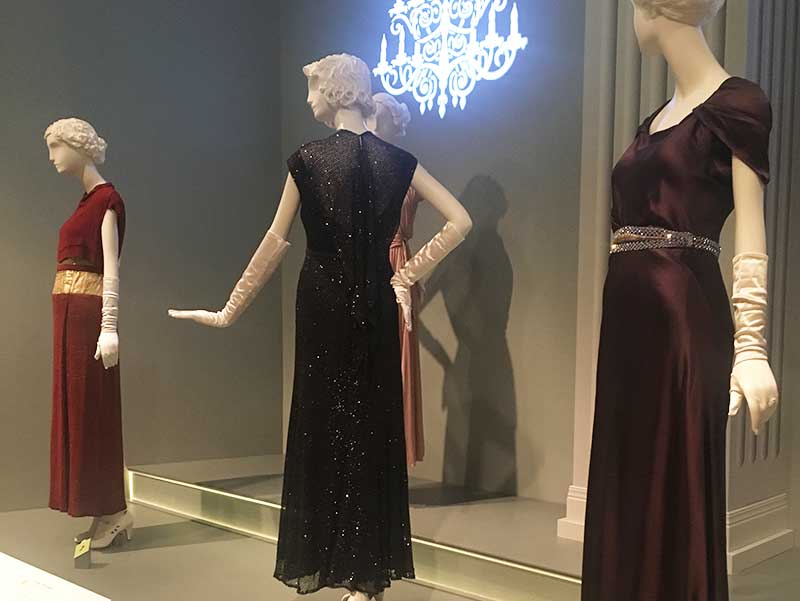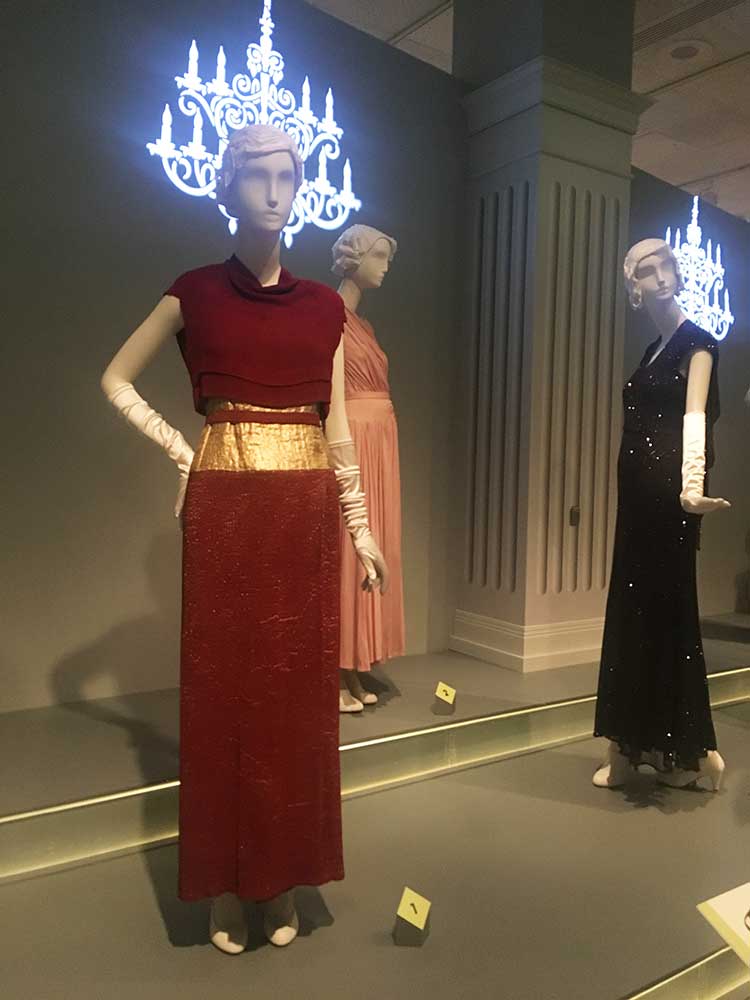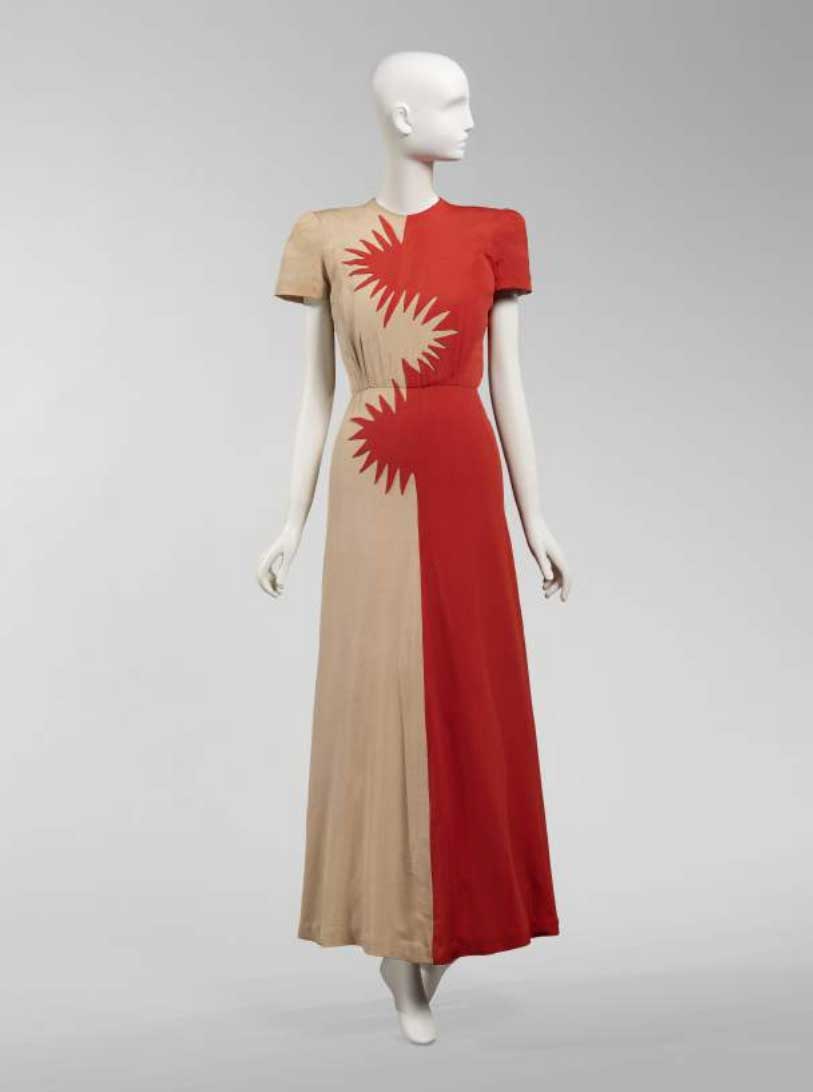Who are the Original Influencers? The Chicago History Museum’s Silver Screen to Mainstream Fashion Exhibit Has the Answer

It’s no secret that Hollywood, American culture and couture have had a strong relationship for a very long time. The newest fashion exhibit at the Chicago History Museum, “Silver Screen to Mainstream: American Fashion in the 1930s and 40s,” explores that relationship and Hollywood’s massive impact on American fashion during a particularly tumultuous time in American history — between the Great Depression and World War II.
Thirty dresses from the Museum’s permanent collection are on display — some for the first time ever — each worn by Chicagoans and each demonstrating the shift in fashion influence from Paris to Hollywood.
“I wanted to make this very American-centered, because everything is so European-centered,” said Virginia Heaven, guest curator and associate professor of fashion design at Columbia College Chicago. “There’s some incredible fashion that is American fashion, and I wanted to showcase that. So the obvious thing to me was [to look at] movies. Because the first fashion influencers outside of Europe were costume designers for movies.”
In fact, prior to the 1930s all fashion trends and influence came from Paris, but when movies came about, people’s focus shifted to what their favorite stars were wearing. Much like today, this phenomenon transcended across all social norms and reached the richest and poorest in society, and everyone else in between. Heaven wanted to demonstrate that influence of movies across all social norms and arranged the pieces to illustrate that, starting with “The Allure of Paris,” where you see high-fashion gowns by Schiaparelli and Vionnet, as well as and an all-black standout by Gabrielle Chanel, all worn by upper class Chicagoans.
“Wealthy Chicagoans were well-dressed,” Heaven said. “They made an effort. If they wanted a new dress, they went to Paris for couture.”

Inasmuch as Paris couture is spectacular, Heaven wanted to really delve deep and highlight American design. Hence the adjacent couple of displays featuring dresses worn by everyday, upper-middle-class women in Chicago and New York, and created by American fashion designers. A standout is a bright orange, satin evening gown with a cutout back, high neckline and rhinestone belt.
“In Chicago during the movies era there was a new kind of glamour that was being generated by costume designers. And it become significantly American in its style. Fresh and independent, easy to wear but very dramatic,” she said. “You can dance in these garments, you can sit at a table, you can be active, yet very sleek.”
The platform across highlights dresses worn by middle class and working class women “who dressed up to go to the movies, or weddings, and reused their dresses for [different occasions.]” said Heaven.”These were ordinary people trying to keep up during a very challenging time in the history of the country as well as the city. So that’s why I find this really important. The studios were very clever. They knew they were influencing fashion so they cashed in on it. Very smart, and a very American capitalist approach.”
 The last platform shows clothing from costume designers like Adrian, Irene, Howard Greer and Omar Kiam, who also had their own fashion labels. It also features Heaven’s favorite piece of the entire exhibit made by Illinois-born designer Howard Greer — a red and beige evening dress, created based on the film “My Favorite Wife,” for which Greer designed costumes.
The last platform shows clothing from costume designers like Adrian, Irene, Howard Greer and Omar Kiam, who also had their own fashion labels. It also features Heaven’s favorite piece of the entire exhibit made by Illinois-born designer Howard Greer — a red and beige evening dress, created based on the film “My Favorite Wife,” for which Greer designed costumes.

“This dress is the perfect example of silver screen to mainstream,” Heaven said. “The same year this movie was released, [Greer] had a piece in his custom line that was almost identical.”
The exhibit runs through Jan. 21, 2020.
Anna Marevska is the Editor of FashionFiles. She is responsible for the overall editorial direction of the site and writes runway stories, designer profiles, and trend reports.

